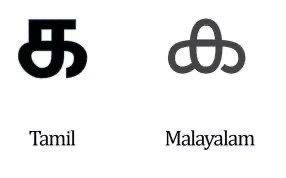
Palakkad Tamil vs. Malayalam: local dialect quirks
Palakkad is a unique cultural region in Kerala where Tamil and Malayalam blend seamlessly, creating a distinct dialect often referred to as Palakkad Malayalam or Palakkadan Bhaasha. This dialect reflects the area’s historical, geographical, and social closeness to Tamil Nadu. Here are some interesting quirks and differences:
Why This Mix Exists
Palakkad borders Coimbatore and Pollachi, and historically, there has been constant migration and trade across the Palakkad Gap in the Western Ghats. This created a linguistic melting pot that’s still strong today in markets, temples, and homes.
1.Vocabulary Blend
Palakkad Malayalam borrows many Tamil words not commonly used in standard Malayalam.
- Example:
- Vaa da (come, dude) – Tamil influence
- Sapal (failure) instead of tholvi or thazhcha
2.Sentence Structure
- The sentence flow can often sound more Tamil than Malayalam:
- Standard Malayalam: Njan kazhinja divasam avide poyi.
- Palakkad style: Naan poya divasam avide ponaen.
3.Humor & Expression
- Palakkad dialect is known for being witty, punchy, and expressive, making it a favorite in mimicry and stage shows.
- Jokes are often delivered with a sharp Tamil rhythm but in Malayalam words.
- “Ippo thane sonnaale! Appo nee kelkalaaye?” — (Just now I told you! You didn’t hear?) — Mixing tenses and languages for comic effect.
4.Cultural Crossovers
- Brahmin communities in Palakkad (like the Palakkad Iyers) speak a mix of Tamil and Malayalam, often with Sanskrit influences.
- In villages, it’s common to hear:
- Kazhcha onnum illa pa (There’s nothing to see, bro)
- Poyi veetukku thinnuda (Go home and eat) — a direct Tamil structure in Malayalam conversation.
5.Influence in Media
- Malayalam films and shows often use the Palakkad dialect for comic or nostalgic characters.
- Example: Characters played by Sreenivasan, Jagathy, or in movies like Achuvinte Amma or Sandesham.
CATEGORIES Uncategorized